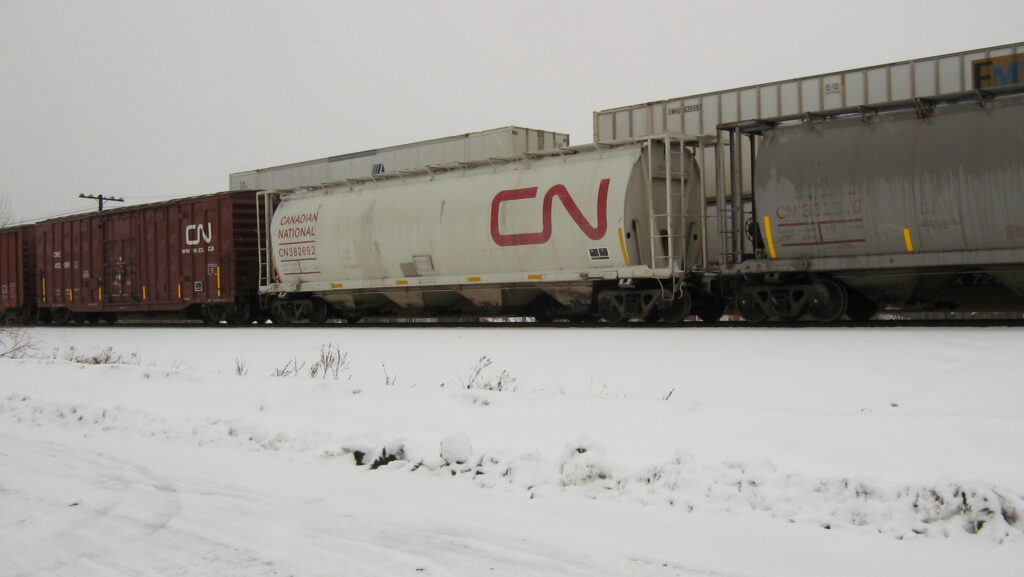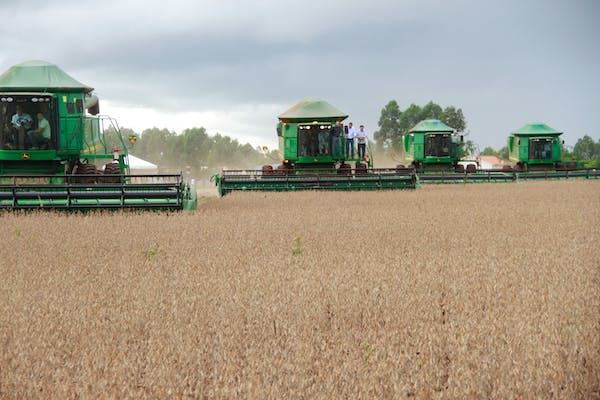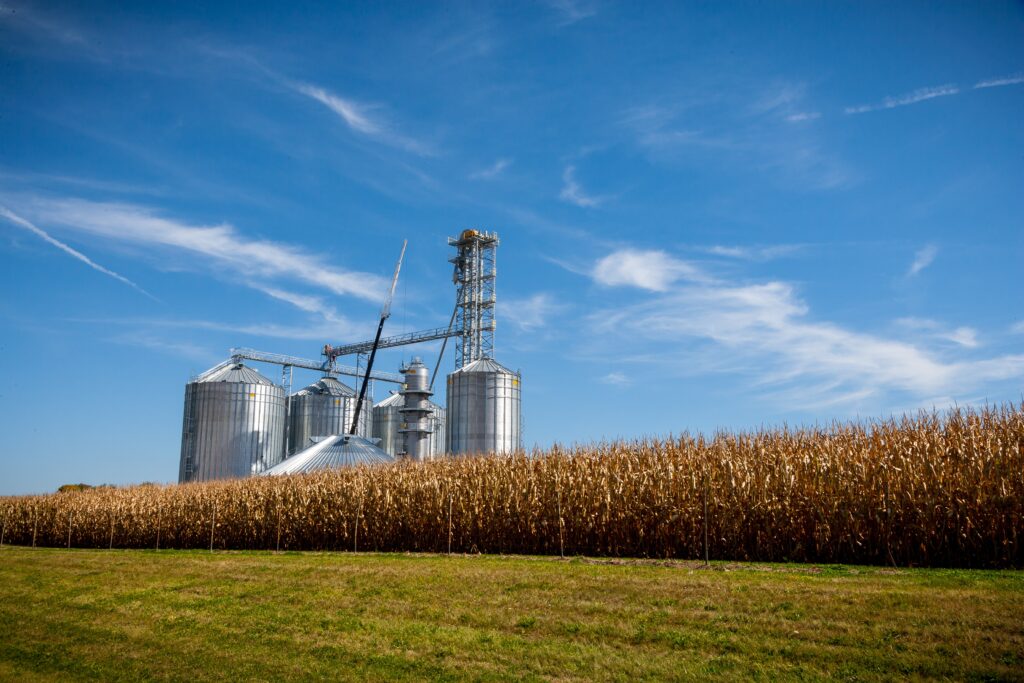
In the interests of the grain producers
Canada Grain Act Discussion Group power-point presentation
Click HereRestoring the Gold Standard (Submission to the Canada Grain Act Review)
Click HereMembership
Click HereOur Views

Honest cop
Farmers don’t expect the Canadian Grain Commission to always take their side but they do expect a vigorous, independent regulator – an honest cop. This policing function must be seen to be effective. Only by restoring the Commission’s presence on the beat – hands on, in the primary elevators and terminals – can producers be assured the CGC is truly regulating Canada’s grain handling system in the ‘interests of the grain producers’.
Subject to Inspector’s Grade and Dockage
The Subject to Inspector’s Grade and Dockage (STIGAD) independent arbitration of disputes provision of the Canada Grain Act, though essential, remains inadequate as a guarantee of equitable grading and dockage. Why? Because STIGAD is rarely used. How rarely? Very rarely: on average only 150-250 times per year. Prairie grain exports now average some 45,000,000 MT annually. Simple arithmetic reveals, even delivered in 44 MT Super-Bs, an average inspection rate of only 1 in 5,000-6,000 primary elevator deliveries. Real world deliveries include tandem and single-trailer combinations, rendering this average even lower – hardly the stuff of rigorous regulatory oversight.
Lack of oversight
Today, aside from the rarely used STIGAD, there is effectively no primary elevator accountability at all. In the absence of country elevator weigh-overs and terminal inward inspection, both abolished in 2012, CGC oversight is no longer possible. Instead, grade and dockage assigned by private elevator staff are in practice final and binding. The assistant commissioners, CGC fixtures in all three prairie provinces from 1929, were also jettisoned in 2012. Weigh-scale certification remains overseen by Measurement Canada but there is no CGC scrutiny of screens and sieves, moisture meters, protein or any of the other myriad instruments used to determine grain quality, including DON and falling number devices and, by extension, farmer incomes.
Farmers and the CGC
Many farmers are unaware of their rights, including the STIGAD option for independent arbitration of grade and dockage disputes. Others fear the hostility of the local elevator if they speak up. Large producers may regard aggravation around grade and dockage as an acceptable trade-off for bulk discounts on inputs or other incentives. Most distressing, many farmers have become cynical, viewing the CGC as just another remote government agency no more amenable to agriculture than the Canada Revenue Agency or their provincial DOT. Collectively, producers have to come to expect too little of the Commission. And farm organizations, snared in the here-and-now tangle of farm politics, their staff and boards often unfamiliar with the Commission’s history and earlier, more comprehensive role, sometimes do the same, proposing policy on behalf of their members that falls short of recovering or even protecting rights their predecessors won decades ago.


Lack of farmer unity
Scattered across four provinces and different, sometimes competing, farm organizations, farmer unity has rarely been in the forefront in recent years. This as farmers appear less and less aware of their rights and even less inclined to assert them under the Act. Moreover, the CGC has far more daily contact with grain handlers than it does with producers; if the squeaky wheel really does get the grease, farmers exist in a netherworld that’s grown increasingly silent. And there’s another problem – widespread belief that because farmers no longer own or control grain after it goes in the delivery pit they’re somehow no longer entitled to systematic safeguards at the elevator or a voice in quality assurance as grain advances through the system. This belief is often tied to the end of the Pools and CWB. We couldn’t disagree more! The producer rights conferred through the Canada Grain Act, from STIGAD to CGC scrutiny of elevator and terminal inventories, to the work of the assistant commissioners, were – and are – legislatively unrelated to co-op grain handling or the CWB. To suggest otherwise – that the Canada Grain Act is somehow dependent on these other institutions and illegitimate without them – is inaccurate historically; to promote this view in 2023 is to be blind to the one-sided power relations of 21st century grain handling.
Governments and the CGC
Ill-considered commissioner appointments (by both governing parties) earlier this century haven’t helped the CGC. In the worst instance, Commission leadership consisted of the blatantly political – and unprecedented – appointment of a former party and ideological ally as chief commissioner, a long time grain company executive as commissioner, and a farmer assistant chief commissioner who no sooner left office than assumed a senior position at Cargill where he was found in breach of federal ethics rules for, “acting in a manner that clearly took improper advantage of his previous positions at the Commission.”
Quality control for whom?
Grain company quality control is comprehensive – firms probe and test every single load before it’s allowed on the scales. Similarly, CGC outward inspection samples each loading increment continuously to maintain Canada’s Certificate Final standards. Surely if the industry can afford load-by-load scrutiny at the elevator and continuous sampling shipside, it can afford more thoroughgoing scrutiny of grade and dockage for farmers than one in every five thousand truckloads.
Fairness for producers
The Canada Grain Act’s section 13 mandate to regulate Canadian grain handling and quality ‘in the interests of the grain producers’ remains a regulatory beacon because it aligns government power with defense of the little guy precisely because the big players have always been strong enough to look after themselves. It is here that the enduring significance of the western farm movement and the Canada Grain Act are most clearly felt today: a permanent expectation – not always fulfilled – that government has a responsibility to address and mitigate excessive market power and economic inequity.
Farmers working together
The Canada Grain Act (CGA) has been grievously weakened in recent years and is in danger of being undermined even further. Prairie farm organizations have an important role to play but none is exclusively involved with this issue or uniquely suited to uniting farmers around the CGA. Only a single-issue caucus laser-focused on the CGA and Commission alone has the capability to bring concerned farmers together to both protect the Act and restore much need powers that have been lost in recent years.
